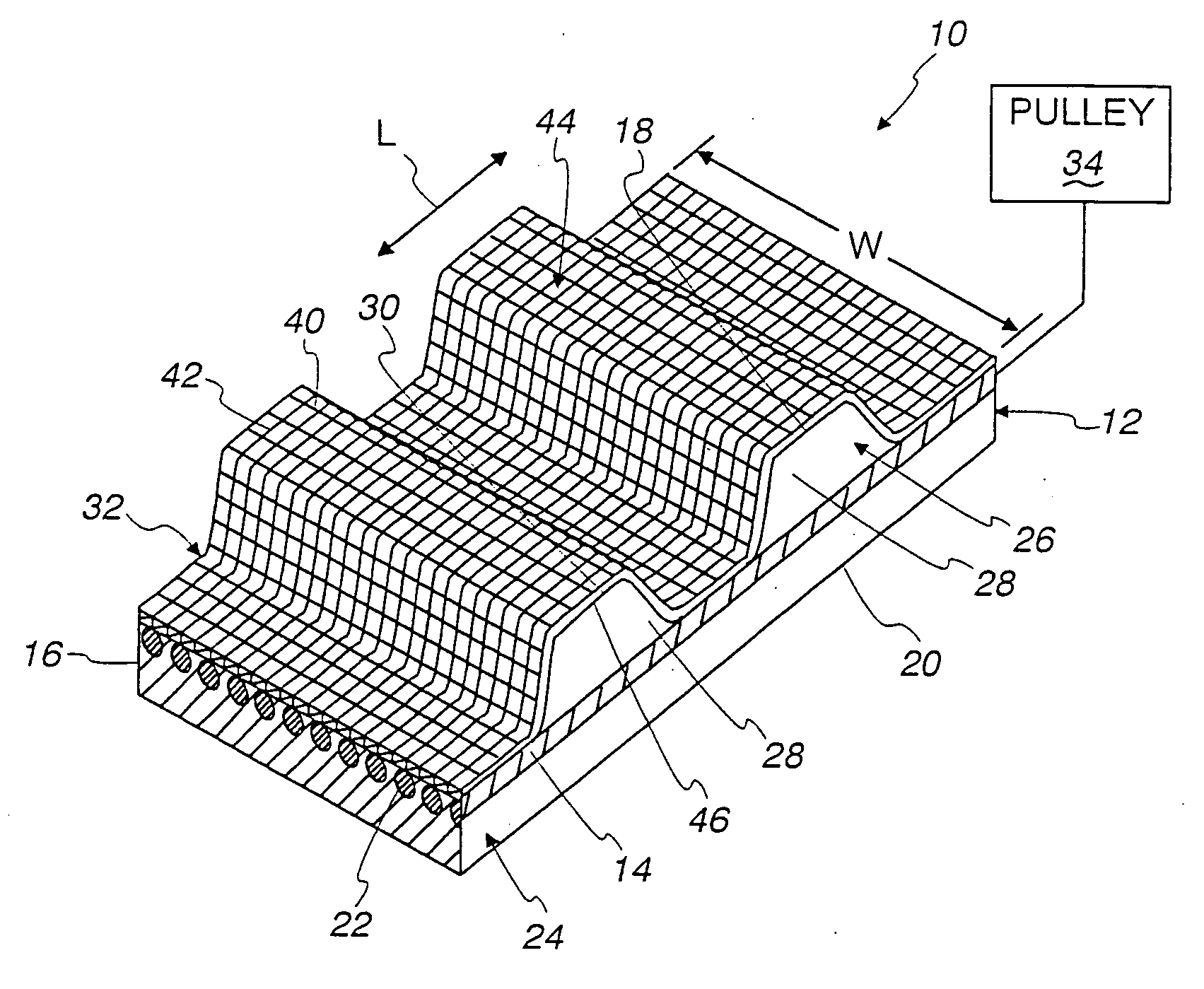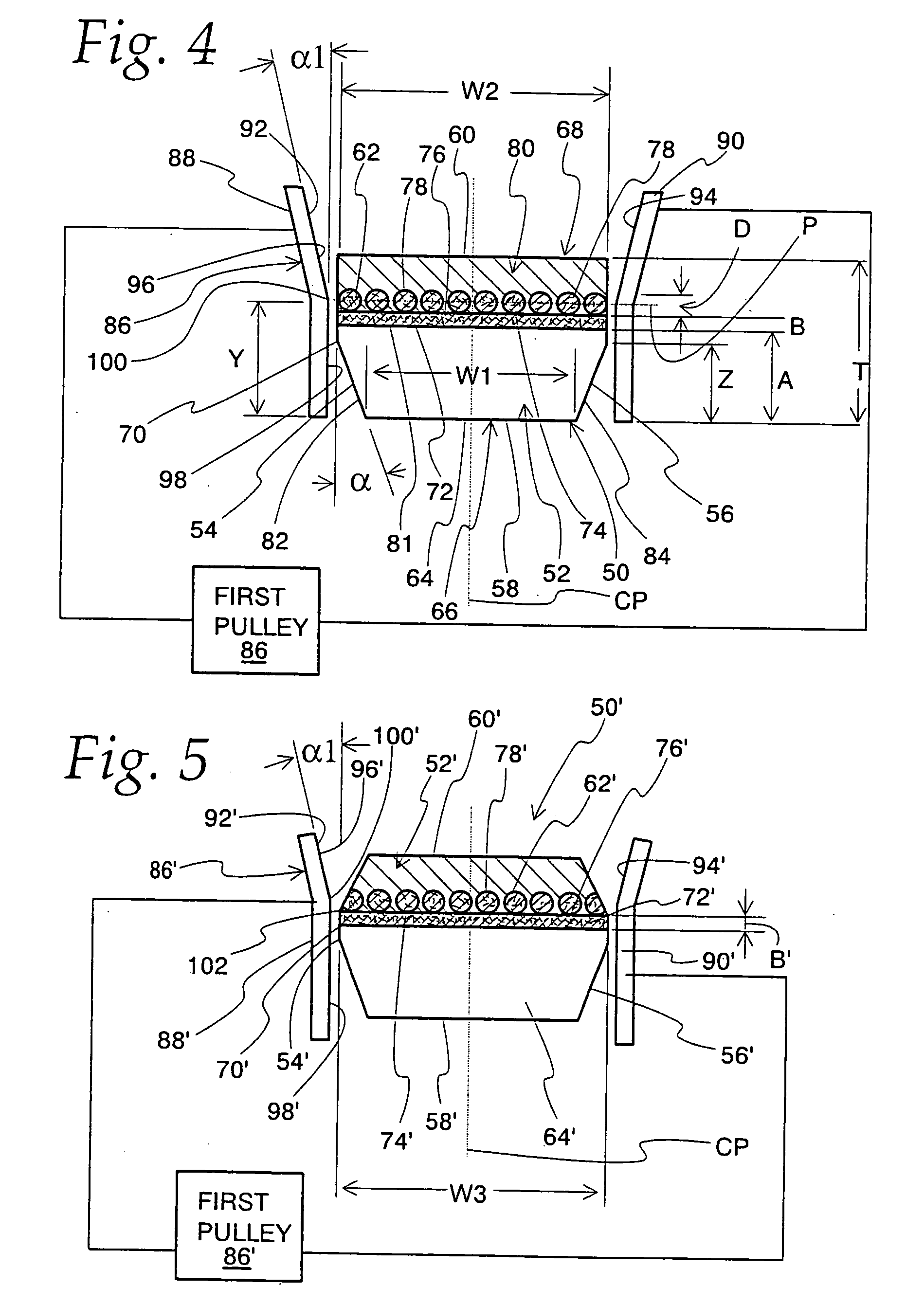Toothed power transmission belt
a transmission belt and transmission belt technology, applied in the direction of driving belts, mechanical equipment, gearing, etc., can solve the problems of prone to less than satisfactory bending fatigue characteristics of belts, and initial elongation of load carrying members
- Summary
- Abstract
- Description
- Claims
- Application Information
AI Technical Summary
Benefits of technology
Problems solved by technology
Method used
Image
Examples
Embodiment Construction
[0046]In FIG. 1, a toothed power transmission belt, made according to the present invention, is shown at 10. The power transmission belt 10 has a body 12 with a length, extending in the direction of the double-headed arrow L, and width W, between laterally spaced sides 14, 16. The body 12 has an inside 18 and an outside 20. The designations “inside” and “outside” are arbitrary as they could be reversed.
[0047]The body 12 is made from a rubber composition and includes at least one embedded load carrying member 22 extending in a lengthwise direction. The load carrying member(s) 22 may be a spirally wrapped single component or a plurality of components spaced laterally from each other. For purposes of explanation herein, the load carrying members 22 will be considered to be plural members, whether made from a single component with spaced turns or multiple, separate, laterally spaced components.
[0048]The belt body 12 is made with two different sections—a back section 24 in which the load...
PUM
| Property | Measurement | Unit |
|---|---|---|
| angle | aaaaa | aaaaa |
| length | aaaaa | aaaaa |
| width | aaaaa | aaaaa |
Abstract
Description
Claims
Application Information
 Login to View More
Login to View More - R&D
- Intellectual Property
- Life Sciences
- Materials
- Tech Scout
- Unparalleled Data Quality
- Higher Quality Content
- 60% Fewer Hallucinations
Browse by: Latest US Patents, China's latest patents, Technical Efficacy Thesaurus, Application Domain, Technology Topic, Popular Technical Reports.
© 2025 PatSnap. All rights reserved.Legal|Privacy policy|Modern Slavery Act Transparency Statement|Sitemap|About US| Contact US: help@patsnap.com



